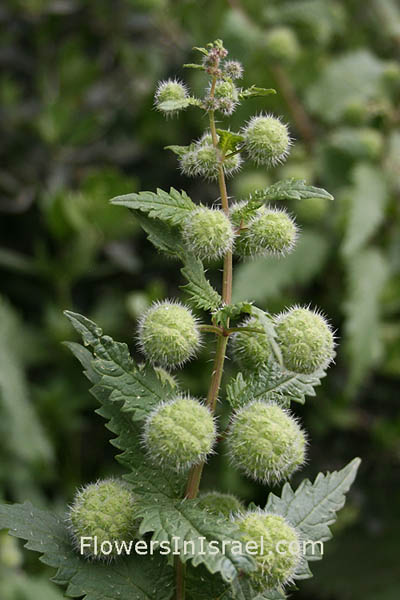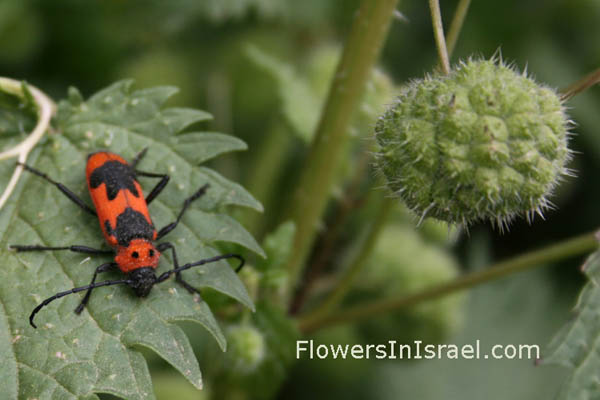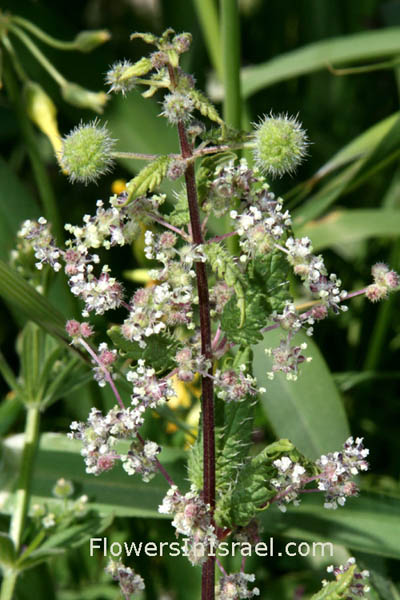Hebrew: סרפד הכדורים, Arabic: حريق
| Scientific name: | Urtica pilulifera L. | |
| Synonym name: | Urtica dodartii L. | |
| Common name: | Roman nettle | |
| Hebrew name: | סרפד הכדורים | |
| Arabic name: | حريق | |
| Plant Family: | Urticaceae, סרפדיים |

|
| Life form: | Annual | |
| Spinescence: | Emergences | |
| Stems: | Up to 30-80 cm high | |
| Leaves: | Opposite | |
| Inflorescence: | Racemes unisexual; female long-pedunculate with flowers in globose heads; male spicate | |
| Flowers: | Green; female flowers with inflated perianth | |
| Fruits / pods: | Achenes, wide ovoid | |
| Flowering Period: | January, February, March, April, May, June, July | |
| Habitat: | Nutrient-rich soils, ruderal | |
| Distribution: | The Mediterranean Woodlands and Shrublands, Semi-steppe shrublands, Shrub-steppes, Deserts and extreme deserts | |
| Chorotype: | Euro-Siberian - Med - Irano-Turanian | |
| Summer shedding: | Ephemeral |

Derivation of the botanical name: Urtica, uro, I burn, alluding to the nettle's sting; stinging nettle. Their capability to sting makes them useful for metaphors. dodartii, named for Denis Dodart (1634 – 1707), a French physician, naturalist and botanist. pilulifera, pilula, a little ball, a pill; fero, to bear, carry, bring; with little balls. The Hebrew name"סרפד, serpad, maybe from סרף = שרף, "Seraf" שרף (resin) and it also indicates the burning characteristic of the plant.
There are four species of true nettles found in Israel: Urtica pilulifera, Urtica urens, Urtica membranacea (Urtica caudata, Urtica dubia), and Urtica kioviensis. They are all common pests of waste places and fields. In the Bible three different Hebrew names are quoted: Sirpad (סרפד)- in Isaiah 55:13; Seravim (סרבים)- in Ezekiel 2:6; Harul (הרול)-Zephaniah 2:9. They are synonyms, the roots s-r-f and h-a-r both meaning 'scorching' or 'burning'. Bible resources:

|